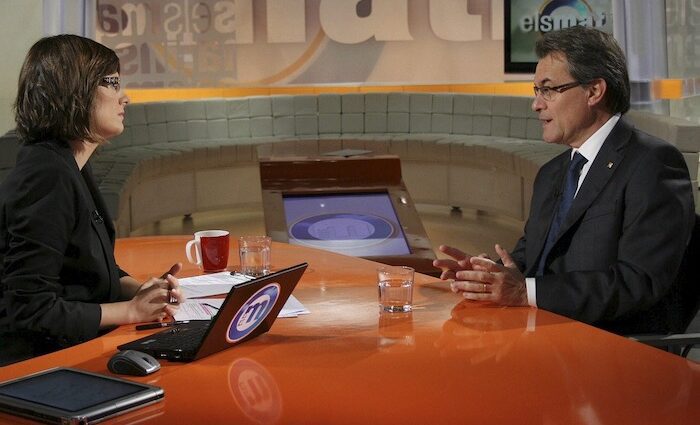Anne Alenskis has extensive experience doing media interviews. Here, she shares her expertise with writers.
I am a writer disguised as a “communications specialist.” I began my career as a writer and journalist, yet over the years I evolved into a communications professional who has writing skills.
As opportunities presented themselves, I applied those skills to positions in marketing, public relations, administration, media relations, video production and project management. Make no mistake … being a writer has been the foundation of my career success, including my work today as The Media Coach.
Decide What You Want and Take the Leap!
My communications education and experience began as I was working my way through college to earn a degree in Journalism. I loved sports and broadcasting, so I found jobs at the campus PBS station and sports information office. That led to opportunities to freelance for the local newspaper and CBS affiliate.
I had earned a required 3rd Class FCC broadcast license while at the PBS station. With that qualification, I walked into a local radio station and applied for a job as a DJ even though they had no openings advertised. The program director was so shocked to meet a woman with a license, he hired me on the spot.
With his support and training, I became the first female DJ in the area and worked that summer from 9 p.m. to 5 a.m. playing rock music. In my senior year, I became the first Assistant Sports Information Director at my university. Life Lesson: Decide what you want and take the leap!

Be Open to Opportunities to Demonstrate Your Skills
As much as I loved sports and broadcasting, when I attended graduate school in southern California, my career took a different direction.
During spring break, I volunteered to work on the Variety Club Telethon with Monty Hall (long-time host of “Let’s Make a Deal”). It was a great learning experience working with celebrities and the live production. (Years later, I wrote and produced two Children’s Miracle Network Telethons.)
After the show, my supervisor told me, if I was ever interested in working at Disneyland, just let him know. I wasn’t aware he had been director of entertainment at the park before starting his PR firm.
About six months later, I joined the Disneyland marketing department and developed my writing skills in public relations, media relations and marketing. To this day, my work at Disneyland and the Disney studio In Burbank was the best experience and training of my career. Life Lesson: Be open to opportunities to demonstrate your skills.
As a writer, you can apply your skills to write anything if you just study the format. You can write a script, news release, speech, ad copy, social media post, books, blogs, etc. Don’t limit yourself!
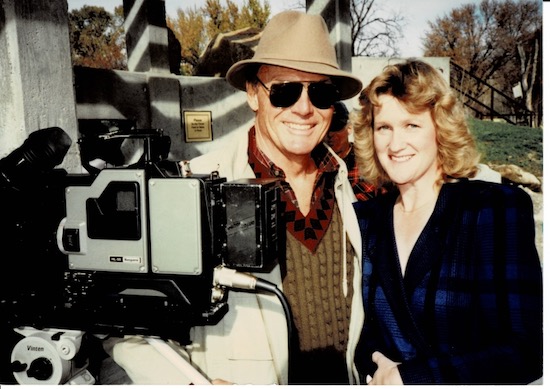
Media Interviews: How I Transitioned into a Media Coach
As a corporate communications professional, I spoke on behalf of the organizations I represented. I prepared for interviews by researching the topic of interest to the reporter, talking to our subject-matter-experts (SMEs), writing talking points and being interviewed.
However, over the years, I found myself helping others step in front of the camera. Reporters will talk with a spokesperson; however, they prefer to talk with a director/CEO, elected official or an SME.
For example, when there were threatening hurricanes in Florida, film crews wanted to talk with the local Albertsons store director — not someone in the corporate office in Boise, Idaho. I would work with store directors on talking points and coach them for the interviews.
When we approached a local television station to schedule regular energy efficiency segments from our power company on their news program, we selected the leader of that team to be the on-air guest.
Prior to the appearance, I would coach her by practicing with talking points, props, timing and appearance. I would also attend the live broadcast and provide off-camera cues for her.
I’ve always enjoyed the process of helping others feel more comfortable being interviewed by the media, so it was a natural transition to The Media Coach.
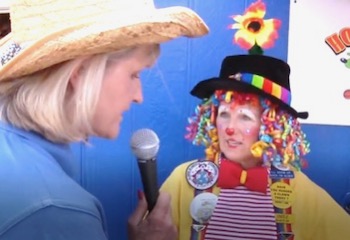
For Media Interviews: It’s Important to Genuinely Enjoy Connecting with People
When I “semi-retired” and relocated to a new community, I began networking with local professionals to identify where there might be a need for communications consulting services.
Several new contacts noted my media experience and mentioned a need for media training in the market.
The owner of a public relations firm mentioned, over lunch, she once had a client who needed media training but had been unsuccessful in finding a local source for it. Another business professional told me, on our coffee date, she would like to have her entire staff go through media training — just to educate them on the basics of media relations.
I mention the social aspect of networking because it is important to genuinely enjoy connecting with people and letting opportunities happen, naturally. I am fortunate to have some amazing professional contacts — many who have become friends over the years. If they should learn someone needs media training, they are likely to help them, and me, by making the referral.
The Most Important Step to Getting My Media Coaching Business Off the Ground
Early in my career, I had the opportunity to take media training from some exceptional coaches. They covered the basics. Most public affairs and public relations firms offer media training, but few specialize in it. I knew from experience, what worked and what didn’t work.
With that in mind, I developed comprehensive media training and coaching programs that would be of value to anyone. That was the most important and time-consuming step to getting my business off the ground — creating a product and service of value.
The next step was to create my business identity. I acquired “themediacoach.com” URL and had my website designed. It is worth the time and expense to have a great website developed. During that process, a designer also created my business logo (which is now trademarked).
In addition to registering my business with the State, I also qualified for certification as a Disadvantaged Business Enterprise (DBE), Emerging Small Business (ESB) and Women Business Enterprise (WBE). Those certifications are helpful in bidding on projects with local and state governments.
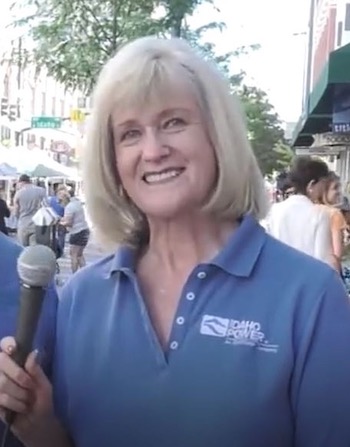 How I Attract New Clients to My Media Interviews Business
How I Attract New Clients to My Media Interviews Business
Be flexible and adapt.
I had just launched The Media Coach at the beginning of the Covid-19 outbreak. All my training programs were for in-person day-long training, from large groups to one-on-one sessions. I had to regroup and change my business model.
How could I offer my training, remotely? Could I take my day-long training sessions and just focus on the basics clients needed in a new Covid-19 environment? More reporters were reaching out to small business owners and healthcare-related agencies. So, I created a Jump Start one-on-one virtual training via Zoom, covering just the basics in three to four hours.
With the new offering, my training became accessible to anyone, anywhere.
Brand yourself well.
The key to my marketing is networking, word-of-mouth and happy clients who have provided testimonials. Potential clients reach out to me via my website contact form, as well as my LinkedIn profile. Your SEO is important in generating traffic to your website, so hiring a professional with that expertise can be helpful.
I used the online design platform, Canva, to create my workbook. They have easy-to-use templates for your social media, presentations and marketing. I’m also marketing to agencies and firms who do not offer media training but can contract with me to provide that added value to their clients.
For media interviews, understand who your audience is.
With that knowledge you can develop targeted strategies.
My target audience expanded, and not just because of Covid-19. My Jump Start media training clients included a social media influencer, TED Talk speaker, leadership coach and banker. Now, my marketing goals are to be available to anyone who wants to effectively communicate messaging during a news interview, or in any public forum, and be more comfortable in that setting.
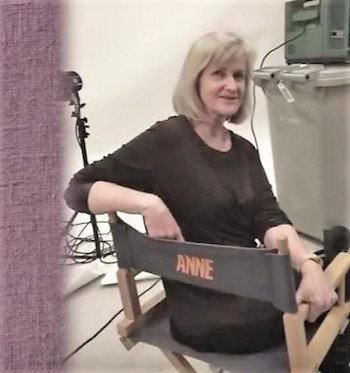
The Key to Successful Media Interviews, Readings, and Other Public Events
The key to successful interviews, readings and other public events is preparation.
The biggest mistake you can make is not to prepare and practice. When you have an opportunity to reach your audience and tell your story, do you really want to just “wing it?” No.
Media Interviews Tip 1. Prepare your messaging.
It is not up to the reporters or the moderator to figure out what you want to communicate. They have their own agenda and will ask their prepared questions.
What are the most important messages you want to leave with your audience? They could be about your book’s content or title, an upcoming signing or launch, your website, your involvement in the community, an upcoming workshop you want to promote, etc. Write out a “talking point,” a brief sentence, for each.
Then, select the most important talking point, as if it would be the only message your audience would remember. Prioritize the others. Hopefully, you will be asked multiple questions that will lead to your talking points. If not, it’s your responsibility to deliver them, in order of importance, to ensure your success.
Talking points communicate more than just the facts. For example, I can respond to a reporter by saying, “There are 20,000 customers without power.” I’d rather say, “Our crews are working around the clock to safely restore power to 20,000 customers.”
In that soundbite, I am communicating our commitment (24/7) to safety (a company value) and to restoring power for our customers (we care about our customers). It’s an opportunity to communicate my messaging, while answering the reporter’s question.
Media Interviews Tip 2. Practice delivering your talking points.
If you have practiced communicating your messaging, you should be able to seamlessly work it into your interview. It should feel natural because it is information about you, your activities and projects.
However, that’s why some people think they don’t need to practice. They are the same people who finish an interview and realize they forgot to mention their website or a local sponsor. Why leave it to chance?
I had a client preparing for interviews about her upcoming TedTalk. During her career as a corporate speaker/trainer, she had presented keynote speeches for numerous Fortune 500 companies, speaking to more than one million people on three continents. In a six-hour seminar, she could effectively communicate a wealth of information; she had complete control.
Now, she had to narrow her content down to a ten-minute TedTalk. Even more challenging, I told her she may have only a 5 to 15 second sound bite in a broadcast news story or one to two sentences in a print story to get her messaging across.
And she would have no control on what the reporter wrote. (No, typically reporters do not send their copy to you for review before it’s published on their multiple media platforms.)
Even someone as accomplished and skilled as she was, needed practice.
Media Interviews Tip 3. Enjoy the interview.
Be positive; stay relaxed, cooperative and responsive.
Make a connection with the reporter. Whether or not you are being recorded or live, look directly at the reporter out of respect. Think of the interview as a conversation with a random neighbor or business associate (but not so personal as a friend).
Smile during the interview. If it is an interview about a serious subject, use a slight smile. Practice in the mirror and you’ll see how you can be serious and not look scary.
Know how you speak, especially when you are nervous. Do you ramble, string sentences together with “uh” and speak too fast? Most people speak too fast when they’re nervous. Try to remember to slow down and breath — or keep a “SLOW DOWN” sticker stuck to your computer screen (which I’ve done).
Practice speaking clearly in a conversational style with short sentences. Then, pause between your answers for emphasis on what you just said; it’s also a signal to the reporter for where to edit your soundbite or quote. Practice your pacing, then adjust, as necessary.
If you work with a media trainer or coach, you’ll learn how to use specific techniques and tips in responding to questions during an interview. This training can be especially helpful when you are expecting difficult questions.
Make sure the in-person training/workshop includes the use of a video camera and practice scenarios, so you have an opportunity for feedback on what you’ve learned. Until then, you can practice using your smartphone, iPad or Webcam.
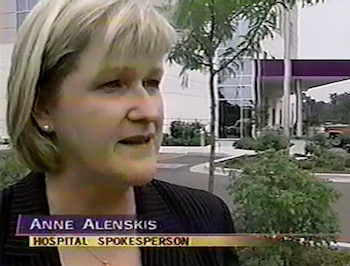
3 Tips to Help Authors Come Across Well On Camera and In Media Interviews
As an author, you may have adapted to the pandemic by moving your signings and other appearances online.
There are important considerations to keep in mind when using your computer webcam or mobile device for those interactions. You communicate with your words and voice, but also with non-verbal communication: your attire, setting and camera shot.
1. Attire
Keep it simple! The focus should be on you, not what you are wearing. Dress appropriately for your messaging and setting.
Select solid colors, preferably blues, grays and pastels. (Solid white, red and black may not work well with your lighting.) Avoid distracting patterns such as stripes, plaids and polka dots. Jewelry also can be distracting if it is shiny, noisy or dangling. A V-neck or scoop neckline is more flattering for women, but a plunging neckline can make your audience uncomfortable.
Keep makeup natural and use foundation to reduce a shiny face; stay away from dark eyes and lip gloss. Men should consider using powder, especially if they have any bald spots.
2. Setting
Create the perfect setting. Find a quiet location without sound or visual disruptions. In the home, that means, no kids, animals or electronics. Remember to silence your cell phone!
Again, the focus should be on you, not your background. It should be clutter-free and neutral. Consider a setting that represents you and your messaging: a chef in a kitchen, a consultant in a home office, an author in front of a bookcase. If your own book titles are strategically placed behind you, that’s a great use of your background. If not, the background may reveal book titles and other items that are distracting or communicate other messages. This also applies to photos and artwork.
Reposition furnishings, remove distracting items, soften the setting with plants and personal items, and create the setting that best reflects you and your messaging. If you are unable to create an appropriate setting, use a blank wall or one of your app’s virtual backgrounds.
3. Camera Shot
Know exactly how your camera shot looks. Is it too tight a shot? Or does it reveal too much of your background? Is your face in the shadows? Does it look like the plant is growing out of your head? Sure, that sounds silly. However, it can happen if you haven’t reviewed your shot.
Your shot should include your shoulders with some head room. In a news interview, the media outlet will run a banner under you with your name and title, or a subject line. There may be similar screen treatments with online appearances.
If you are handling a prop, like a book, make sure you practice bringing it into your shot, so it is visible to your audience. The same applies for cooking demos and other situations where you may need a wider or deeper shot. However, please make sure your camera shot is not revealing inappropriate attire from the waist down!
Lighting is one of your most important considerations. Stay clear of sun-lit windows; close the curtains. It’s just temporary, so feel free to move lamps and other light sources from other rooms to light your setting.
Tip: If you are using a laptop or iPad, locate its camera (which is usually off to the side or on top) and practice looking at it — not the person on screen. You want it to appear as though your eyes are looking at your interviewer or audience.v
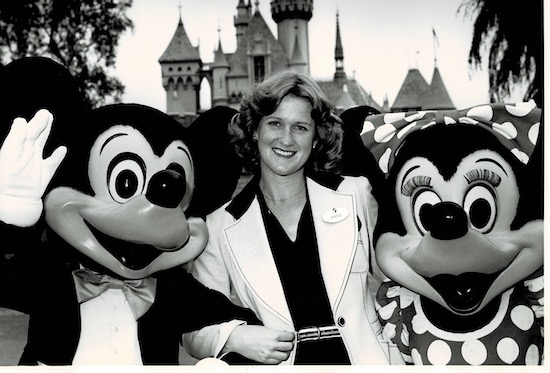
Why Writers Need to Learn More About Interacting with the Media
Every interaction you have with the media is an opportunity to reach your audience and tell your story. Studies have shown that people consider a news story to be more credible than a paid advertisement or content you post on your own website or social media.
When an author appears on a morning talk show, such as giving an opinion on a current issue, demonstrating a cookbook recipe or promoting their upcoming event, it’s like an endorsement. Often, interested viewers immediately search for the author and book on Google (I know I have!). The station usually provides your information and related links on their website.
In addition, you can benefit from your interviews in print, radio, online and social media by linking to their sites from your own site and marketing materials. The synergy is endless.
That’s why it’s so important to establish and maintain good working relationships with media representatives. Keep in mind, they need content for their platforms, and you need the media to reach your audience. It is an interdependent relationship.
For Media Interviews, Become Familiar with Your Local Outlets
Become familiar with all your local and/or national media outlets. Learn what programs they produce that have guest segments. Target programs that cover your genre or that are open to all topics. Reach out to their show producers or bookers and let them know you would be interested in being a guest to share your news or expertise.
You need to offer them and their viewers interesting, timely, visual content. Timely, would be your book launch and signings, as well as your connection to current issues covered in the media.
On the news side, as an author, you can become a valuable resource and subject-matter-expert. For example, if you wrote a book on the history of world pandemics, don’t you think local (or national) news outlets would want to know you are available for interviews at this time in history? Let them know.
Reach out to the media with your contact information and links to your book details, website, social media and other content. If you’ve done other interviews in the media, share those links, as well. They may pass on your offer, for the moment, but now you are a resource available to them.
Media Relations is all about relationships.
Understand and accommodate the reporter’s requirements related to their interest, news cycle and audience. Reporters will appreciate your cooperation and professionalism as they do their job and you do yours — telling your story.
* * *
 Anne Alenskis is The Media Coach with more than 40 years of experience in the communications field representing corporations, government entities, nonprofits and other organizations — including Disney, Albertsons and Idaho Power.
Anne Alenskis is The Media Coach with more than 40 years of experience in the communications field representing corporations, government entities, nonprofits and other organizations — including Disney, Albertsons and Idaho Power.
She has provided media training and coaching to corporate executives and subject-matter-experts, as well as for students in her communications classes at Boise State University. Relocating to Oregon in 2017, she launched her media training and coaching business to help others gain confidence working with the news media, as well as responding to difficult questions in any public forum.
For more on Anne and her work, please see The Media Coach website, or connect on LinkedIn.

